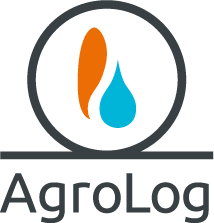Grain Storage: How to Protect Your Harvest
Grain storage is a critical step in the agricultural process, ensuring that the hard work of growing and harvesting is not wasted. Proper storage preserves grain quality, prevents spoilage, and extends shelf life, making it essential for both farmers and the food supply chain. This post will explore key strategies for effective grain storage and the benefits of getting it right.
Why Proper Grain Storage Matters
Grains are vulnerable to a variety of threats after harvest, including moisture, pests, and temperature fluctuations. Without proper storage, these factors can lead to significant losses:
Preventing Spoilage:
Grains with high moisture content are prone to mold and bacterial growth, which can spoil the entire batch. Proper drying and storage conditions are crucial to prevent this.
Preserving Nutritional Value:
Grains are rich in nutrients, but improper storage can lead to nutrient degradation, reducing their value as food and feed.
Maintaining Market Value:
Well-stored grains retain their quality and can be sold at a better price. Conversely, poor storage can result in a loss of market value due to spoilage, discoloration, or insect damage.
Benefits of Proper Grain Storage
Extended Shelf Life: Well-stored grains can last for months or even years without significant loss of quality.
Cost Savings: By preventing spoilage and loss, effective storage reduces the need for additional investments in new grains.
Food Security: Proper storage ensures a steady supply of grains, which is critical for food security, especially in regions prone to shortages.
Monitor Grain Storage with AgroLog
AgroLog Grain Bin Monitoring System is a powerful tool for monitoring grain storage in bins and silos, ensuring your grain stays in top condition. Here's why it's crucial to track moisture, temperature, and CO₂ levels:
Moisture Control:
High moisture leads to mold and spoilage. AgroLog provides real-time moisture data, allowing you to prevent costly damage by adjusting conditions as needed. Read more about our Moisture Sensor Cables.
Temperature Regulation:
Temperature fluctuations cause condensation, leading to spoilage. AgroLog monitors temperature with sensor cables, helping you maintain stable conditions and avoid losses.
CO₂ Monitoring:
Rising CO₂ levels indicate biological activity, such as insect infestation or mold growth. AgroLog alerts you early, so you can address issues before they escalate. Our CO₂ sensor is the perfect addition to your temperature and moisture monitoring.

